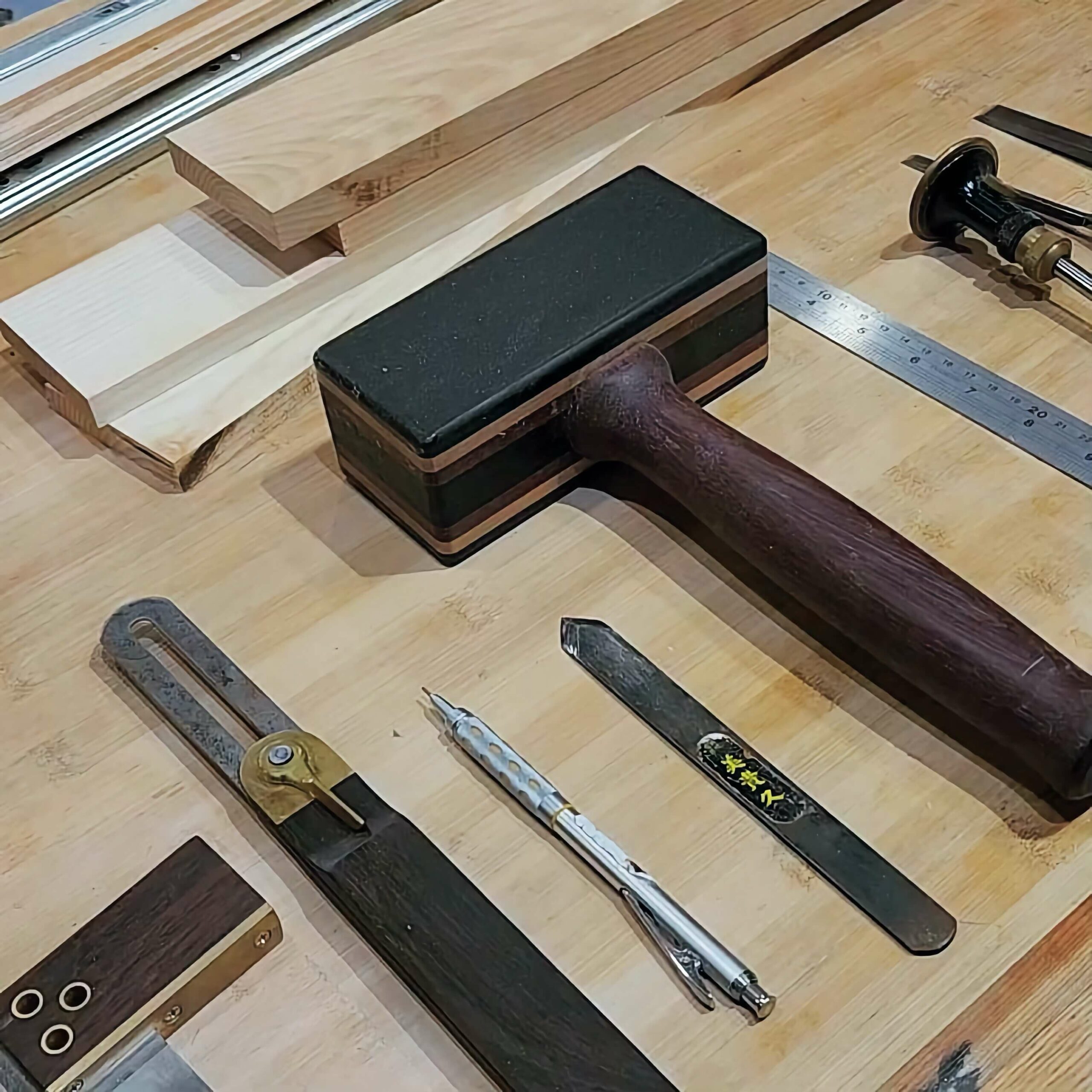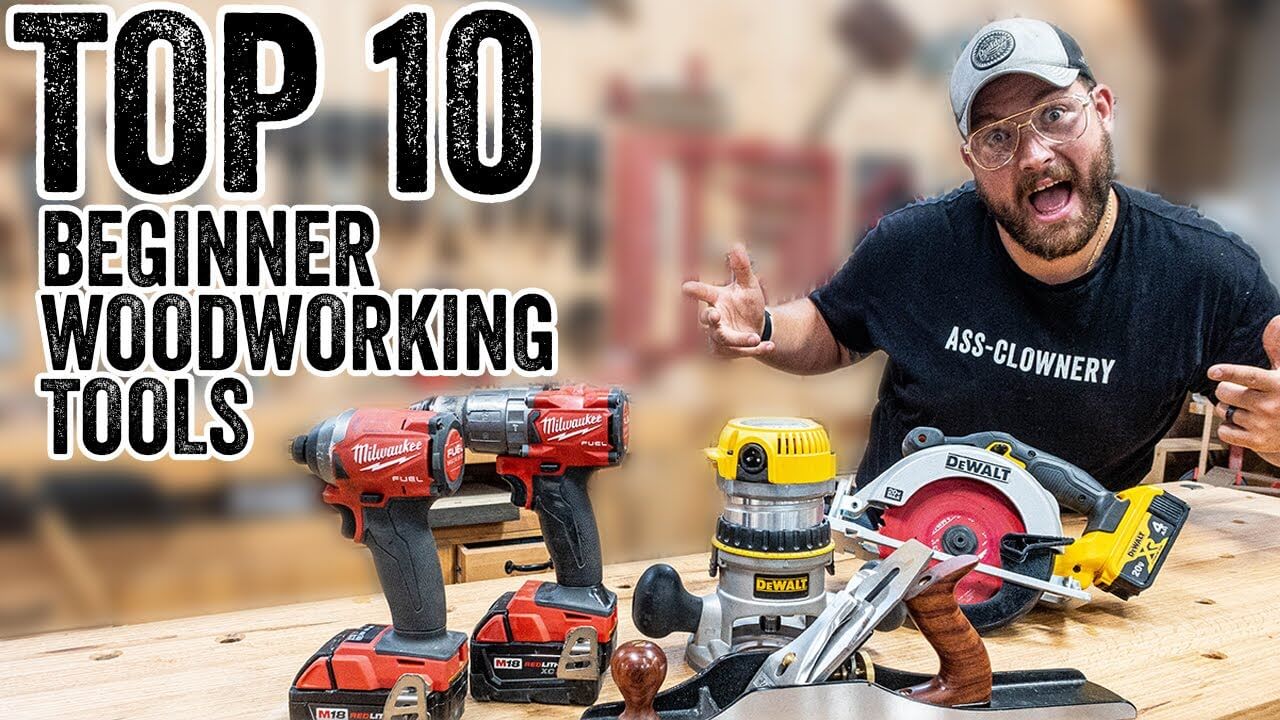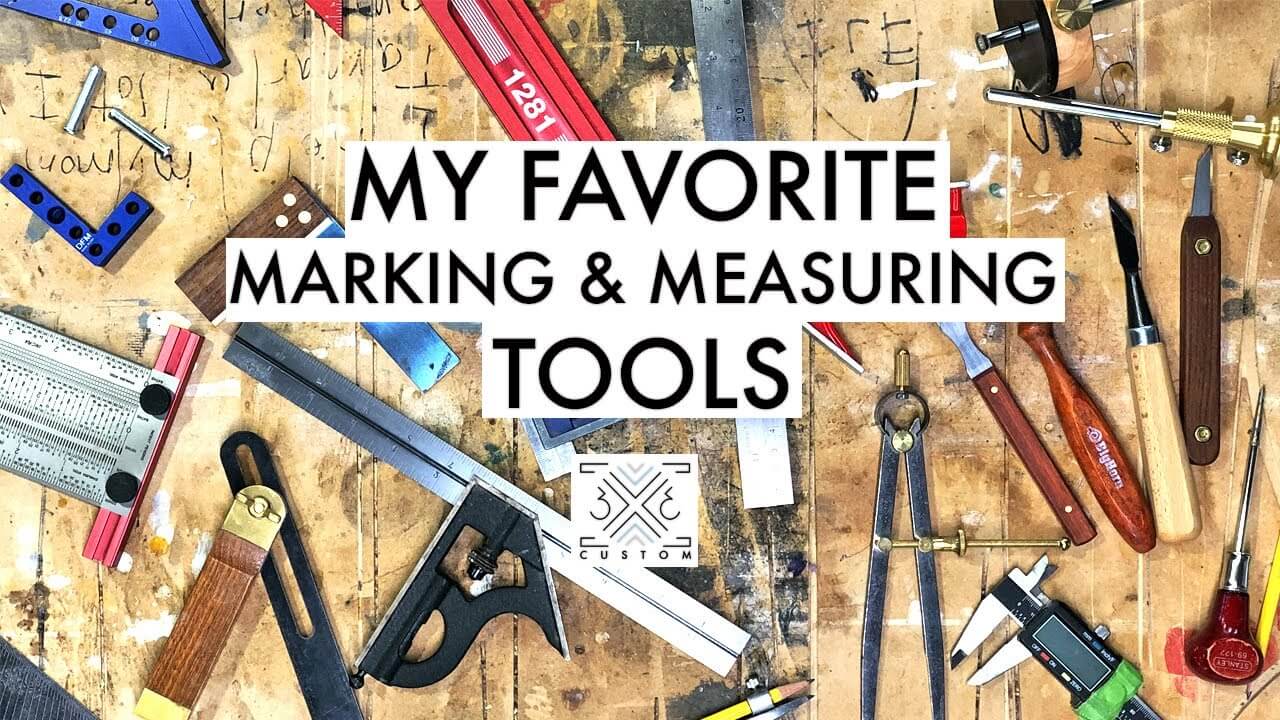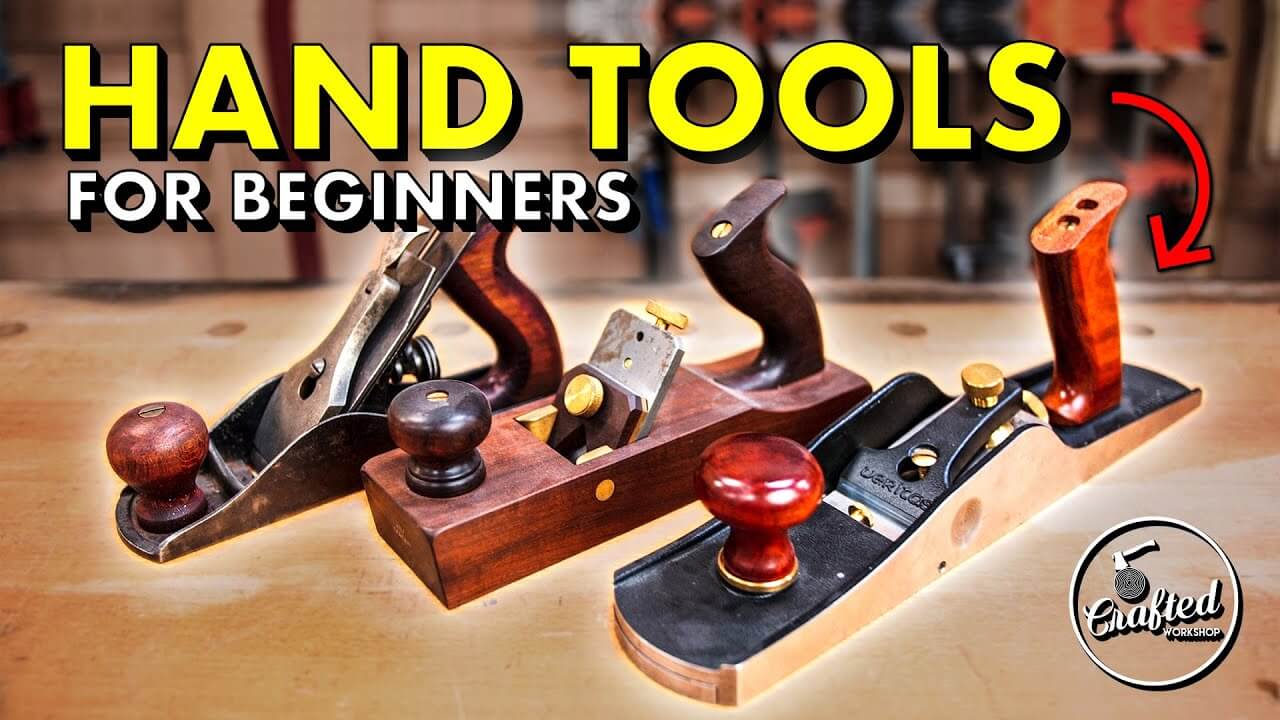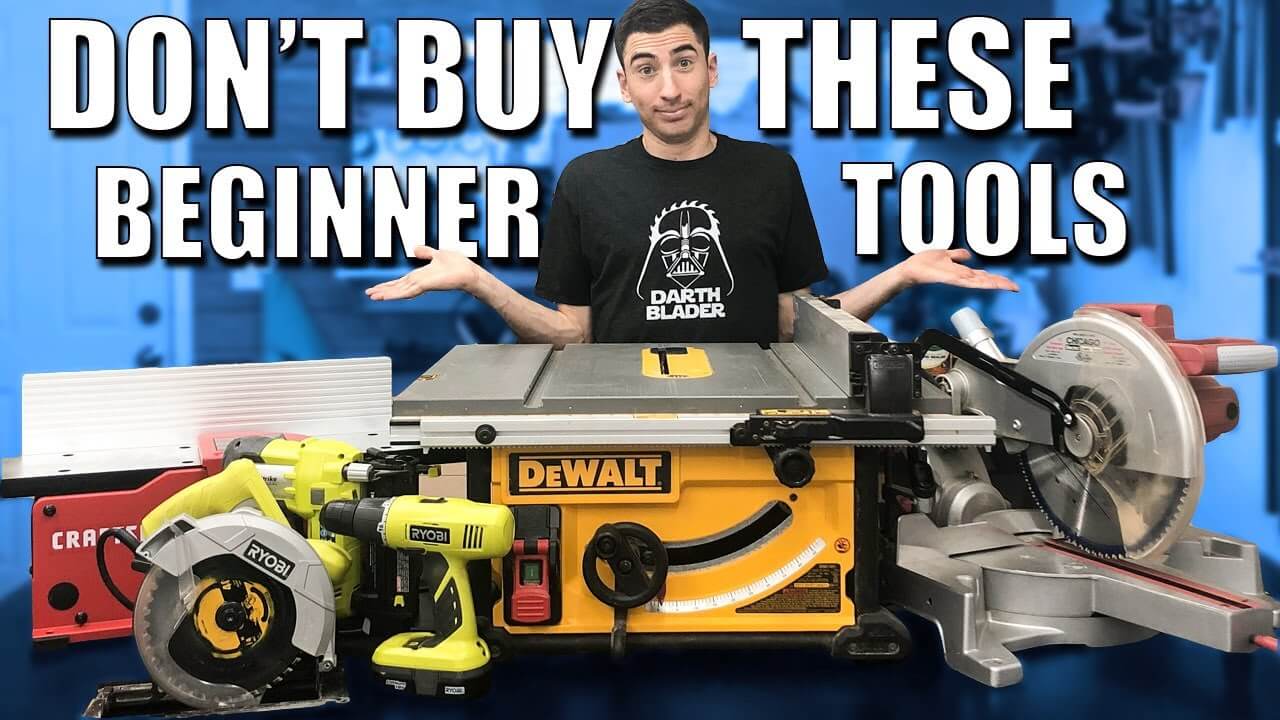Essential Woodworking Tools to Master Your Craft
Curious about the key tools that turn timber into artistic wonders? Uncover the essential woodworking tools that every craftsman needs for turning simple wood into stunning masterpieces.
In a Nutshell:
For beginners, it’s crucial to start with the basics: chisels for precise carving, handsaws for cutting, and hammers for assembling. As skills evolve, explore advanced tools like bench planes for shaping, axes and hatchets for larger wood sections, and a comprehensive set of screwdrivers for intricate assembly. Turning tools shape cylindrical pieces, while sharpening stones maintain tool sharpness. Accurate measurements are vital, achieved using digital angle finders, calipers, and combination squares. Embrace these tools to craft anything from simple furniture to intricate decorative pieces.
Basic Woodworking Tools for Beginners
For those starting in woodworking, selecting the right tools is key to mastering foundational skills. Essential tools like saws for cutting, chisels for carving, and hammers for joining enable beginners to tackle basic projects. As your proficiency grows, you need tools beyond dills for drilling large holes in wood for advanced techniques and intricate designs.
1 | Files & Rasps
Files and rasps are indispensable for refining and shaping wood. While files, with their dense, multiple teeth, are perfect for detailed work, rasps excel at tackling rougher surfaces with their singular, aggressive tooth. Available in a variety of sizes and shapes, they’re essential for correcting mistakes, smoothing surfaces, crafting curves, and more. Investing in a set that offers both is a wise choice for versatility.
Applications:
2 | Bench Planes
A timeless tool, the bench plane is a hand-operated marvel that allows you to shape and smooth wood surfaces. Its weight demands a firm grip and pressure, ensuring the tool glides seamlessly across the wood. The blade at its base, depending on your maneuver, can finely shave off wood, helping you achieve the desired shape. Every beginner should have at least one in their toolkit, given its multifaceted applications.
Applications:
3 | Axes & Hatchets
For those moments when you need to tackle larger chunks of wood, axes and hatchets come to the rescue. While axes, with their longer handles, are designed for two-handed use, hatchets, with their compact design, can be wielded with one hand. They’re especially handy for outdoor woodworking tasks.
Applications:
4 | Screwdrivers Set
A staple in any toolkit, screwdrivers are essential not just for woodworking but for a myriad of tasks. They assist in affixing, tightening, or removing screws from wood pieces, ensuring stability in your creations. A comprehensive set, offering various sizes and functionalities, is a must-have, often accompanied by a selection of compatible screws.
Applications:
5 | Turning Tools
Primarily used for shaping cylindrical wooden pieces, turning tools work in tandem with a rotating machine. Crafted from durable carbon steel, they come in diverse shapes and sizes tailored for specific shaping tasks. Some popular variants include parting tools, bowl gouges, and spindle gouges, among others.
Applications:
6 | Sharpening Stones
Maintaining the sharpness of your blades is paramount. Over time, tools like chisels and gouges may dull, but with sharpening stones, you can restore their edge. While there’s a range of materials these stones are made from, water stones and diamond stones are particularly recommended for woodworking.
Applications:
Integral Tools for Measuring & Angles
Building woodworking projects to sell for profit, requires accurate measurements and angles are crucial for tasks like cutting to exact dimensions, ensuring tight joinery, and aligning assemblies. Tools such as calipers, protractors, and squares guarantee precision, ensuring each piece fits seamlessly and maintains structural integrity.
1 | Digital Angle Finder
A contemporary upgrade from the traditional protractor, the digital angle finder is revered for its unmatched accuracy. With its digital display, it provides instant readings, eliminating the guesswork associated with manual tools. It’s a must-have for any woodworker aiming for perfection in their angular measurements.
Applications:
2 | Digital Caliper
When every millimeter counts, the digital caliper steps in. This tool is designed to measure the external, internal, and depth dimensions with impeccable precision. Its digital screen offers clear readings, ensuring that measurements are always spot-on. Whether you’re crafting intricate inlays or ensuring uniformity in multiple pieces, a digital caliper is indispensable.
Applications:
3 | Combination Square
The sliding bevel, also known as the bevel gauge, is a tool that allows woodworkers to transfer and measure angles with ease. Its adjustable blade can be set to any angle, making it a versatile tool for various woodworking tasks. From setting dovetail angles to ensuring the accuracy of mitered corners, the sliding bevel is a reliable companion.
Applications:
4 | Protractor
The classic protractor, often reminiscent of school geometry kits, finds its place in the woodworking workshop too. It’s used to measure and draw angles. While digital angle finders offer more advanced features, the simplicity and reliability of a protractor make it a favorite among many woodworkers.
Applications:
5 | Sliding T-Bevel
Also known as a bevel gauge, the sliding T-bevel is a versatile tool that sets and measures angles with ease. Its pivoting blade adjusts to capture various angles, making it invaluable for diverse woodworking tasks. Paired with a protractor, it allows you to replicate angles on any wood piece with precision.
Applications:
6 | Tape Measure
The quintessential measuring tool, a tape measure is indispensable in any woodworking space. It provides quick measurements of wood pieces and other objects essential for projects. While retractable tape measures are popular for their convenience, other varieties like folding tapes, yardsticks, and reel tapes also have their place in the workshop.
Applications:
Must-Have Hand Tools for Woodworking
Hand tools are essential for woodworking tasks like intricate carving, joinery, and finishing. While machinery expedites the process, different types of hand tools offer precision and a tactile connection to the material, allowing artisans to achieve detailed craftsmanship.
1 | Wood Chisels
Chisels are the quintessential tools for carving and shaping wood. Made predominantly of steel, they come in a spectrum of sizes to cater to various tasks. Whether you’re crafting intricate details or chiseling out joints, these tools are a must-have. A well-maintained set, sharpened to perfection, can be a game-changer in your woodworking endeavors.
Applications:
2 | Clamps
In woodworking, sometimes you need an extra hand, and that’s where clamps come in. They hold pieces of wood together securely, allowing for gluing, cutting, or any other operation. From C-clamps to bar clamps, having a variety in your workshop ensures you’re prepared for any project. These clamps make it easier for you to work on the wood using other tools or it can simply be a way for you to keep the pieces attached firmly after joining them with other materials.
Applications:
3 | Mallets & Hammers
While they might seem rudimentary, mallets and hammers are crucial for a range of tasks in woodworking. Mallets, typically made of wood or rubber, are perfect for driving chisels without damaging them. Hammers, on the other hand, are versatile tools used for driving nails, breaking apart wood, and even for some light shaping tasks. Note, if you are a beginner, start out with hammers of around 10 ounces.
Applications:
4 | Hand Saws
A woodworking arsenal feels incomplete without hand saws. These hand-driven marvels, with their toothed blades, are adept at delivering precise cuts. Ranging from the versatile handsaw to niche ones like the dovetail and coping saws, each has its distinct role. It’s prudent to invest in a renowned brand, ensuring the blades are razor-sharp.
Applications:
5 | Punch Sets
Punch tools have carved a niche in woodworking, owing to their proficiency in effortlessly creating holes or notches. Typically metallic with a pointed tip and a flat end, they’re driven into wood using a hammer. Whether it’s for aesthetic textures or to embed nails or screws deeper, their utility is undeniable. A set offering varied tip widths is a prudent investment.
Applications:
6 | Scrapers Sets
Scrapers, with their diverse shapes, are the unsung heroes of woodworking. Resembling thin metal cards, their sharp edges deftly remove minute wood fragments and fibers. While traditional scrapers are straightforward, contemporary ones often feature handles, enhancing control and applied force. A set encompassing multiple shapes ensures you’re equipped for any scraping task.
Applications:
Essential Power Tools for Woodworking
In woodworking and furniture making, power tools are indispensable for tasks like precise cutting, drilling, and finishing, when it comes to creating cool woodworking projects for beginners. Driven by electricity, they ensure accuracy and efficiency, outperforming manual tools in speed and precision.
1 | Table Saw
Often considered the centerpiece of a woodworking shop, the table saw is designed for versatility. Its electric motor spins a blade, typically circular, that rises through a slot in the table. Depending on the blade’s design, it can make rip cuts (along the grain), crosscuts (across the grain), or even dado cuts (grooves in wood). The adjustable blade height and angle allow for a wide range of cuts, from deep lumber slices to thin veneer shavings.
Applications:
2 | Planer
Think of a planer as a tool that brings uniformity. When you have wood that’s rough or of varying thicknesses, the planer comes into play. Its sharp, rotating blades remove the wood’s top layer, ensuring each piece is consistent in thickness. Especially useful for preparing stock, a planer ensures your wooden planks are not just smooth, but also dimensionally accurate.
Applications:
3 | Jointer
The jointer’s primary role is to ensure the edges of wood pieces are straight and true. This is vital when joining boards side-by-side for larger panels. The jointer’s in-feed and out-feed tables, with a cutter head in between, facilitate this. As wood is fed over the cutter head, it removes high spots, ensuring the board’s edge is perfectly flat and square to the face. There are usually different kinds of blade heads that you can choose from based on your requirements.
Applications:
4 | Miter Saw
Precision in angular cuts is the miter saw’s forte. Mounted on a stationary base, its pivoting arm allows the circular blade to be lowered onto the wood, making clean crosscuts. The adjustable miter index enables the blade to tilt for angled cuts, essential for frames or molding. Advanced versions can tilt in two directions, allowing for compound miter cuts. Apart from a standard miter saw, compound and sliding miter saws also exist for making more complex angles.
Applications:
5 | Orbit Sander
For those final touches that transform a project from “done” to “refined,” the orbit sander is invaluable. Its oscillating motion ensures that the sanding pad doesn’t move in the same path repeatedly, reducing the risk of marks or gouges. By using sanding discs of varying grits, woodworkers can progress from rapid material removal to fine finishing. The rotational motion of the sander will help ensure that it does not end up sanding too much of a certain area.
Applications:
6 | Circular Saw
A go-to for making straight cuts in lumber, especially when portability is key. The circular saw’s blade, encased in a guard for safety, spins at high speeds. Its depth of cut is adjustable, allowing for shallow notches or deep through-cuts. With the right blade, it can tackle everything from plywood to hardwoods, making it a versatile addition to any toolkit. The blades of such saws are usually interchangeable in case you wish to work with different sizes.
Applications:
Crucial Woodworking Safety Equipment
Safety is key when conducting DIY work in your woodshop, and caution expends beyond just hand and power tools, you need to take care when working with liquid nails or wood glue. The wood dust, sharp pieces, and potential chemicals might end up causing you great harm if you are not careful, so make sure you always have the following safety equipment in place to undertake your craft more seamlessly.
1 | Shop Apron
A shop apron is more than just a barrier against wood dust and shavings—it’s a craftsman’s shield. Designed to provide an added layer of protection against accidental nicks from sharp tools, it also serves as a convenient storage solution. With strategically placed pockets, it offers easy access to frequently used tools like chisels, punches, and files. When selecting an apron, materials like canvas or leather stand out for their durability and ease of maintenance.
Applications:
2 | Safety Glasses
Your eyes are irreplaceable, and safety glasses ensure they remain unharmed amidst flying debris and wood particles. These glasses are designed to offer a snug fit, with a wraparound elastic band ensuring they stay in place, even during the most rigorous tasks. A wide lens area ensures maximum coverage, sealing off any potential entry points for dust. Always adhere to the guidelines set by the Occupational Safety and Health Administration (OSHA) is the best solution.
Applications:
3 | Dust Collector
Woodworking can be a dusty affair, and a dust collector is your first line of defense against a messy workshop. This equipment, whether it’s a bin, bag, or container, is equipped with tubes that connect to your woodworking tools. As you work, wood dust and debris are channeled directly into the collector, maintaining a cleaner workspace and reducing the risk of respiratory issues.
Applications:
4 | Hearing Protection
The persistent hum and roar of power tools, if left unchecked, can gradually impair your hearing. Earplugs and earmuffs serve as vital barriers, attenuating these loud noises and preserving the integrity of your ears. When selecting hearing protection, it’s imperative to pay attention to the noise reduction rating (NRR) to guarantee maximum defense against intense sounds. Prioritizing your auditory health is paramount; enduring hearing loss or conditions like tinnitus can have profound, lasting impacts on one’s quality of life.
Applications:
5 | Respirator Mask
Breathing in wood dust and chemical fumes can have long-term health implications. A respirator mask acts as a barrier, filtering out these harmful particles and ensuring you breathe clean air. Designed to fit snugly over the nose and mouth, these masks offer both protection and comfort. Always opt for masks that have been approved by the National Institute for Occupational Safety and Health.
Applications:
6 | Shop Vacuum
A shop vacuum is the unsung hero of a woodworking workshop. Tailored specifically for workshop environments, these vacuums boast powerful suction capabilities, adept at picking up both fine dust and larger debris. Their versatility extends to cleaning up spills, making them an indispensable tool. When selecting a shop vacuum, consider its capacity and ensure regular maintenance to keep it running efficiently.
Applications:
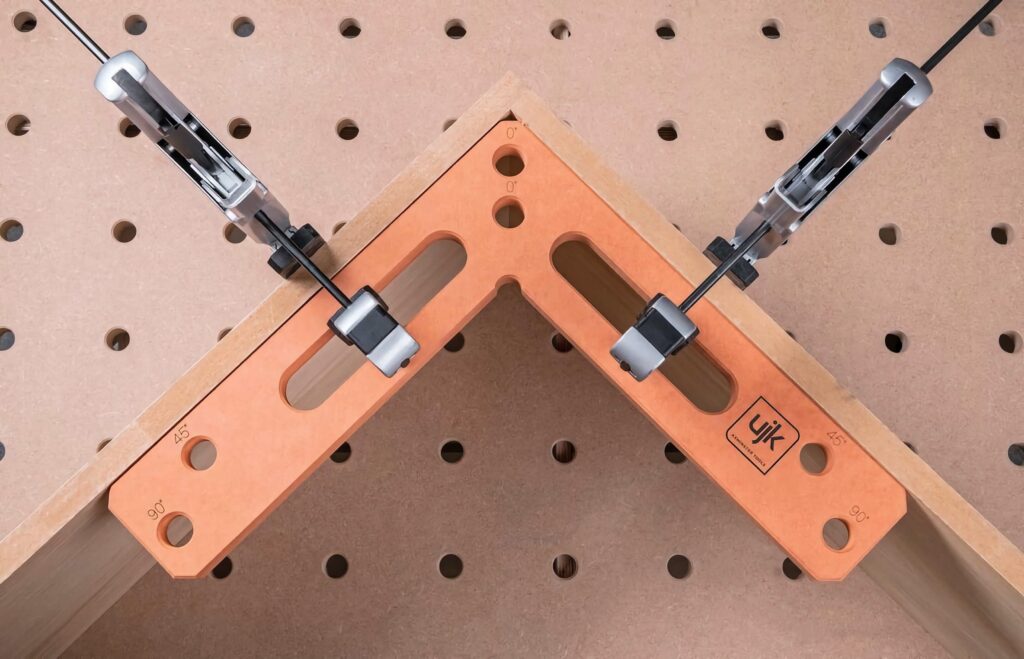
The Bottom Line: Must-Have Beginner Woodworking Tools
Woodworking is an intricate craft, blending both art and skill. From the meticulous selection of wood for desktops to the creation of intricate furniture pieces, every step demands precision, dedication, and the right tools.
Key Takeaways:
Equipping oneself with essential power tools can expedite the crafting process, but it’s the safety equipment that ensures the artisan’s well-being. Remember, a well-protected craftsman is a confident and efficient one. As you embark or continue on your woodworking journey, always ensure that safety and quality go hand in hand.

